People all over the world love coffee and tea, each with its own deep history, cultural importance, and loyal fans. Besides their comforting warmth and taste, many cherish these drinks for the caffeine kick they provide, helping to wake up in the morning or get through a slow afternoon. Caffeine doesn’t just open our eyes; it can also sharpen our focus, make us more alert, and improve how well we perform physically.
Because caffeine plays such a big role, many of us compare coffee and tea, looking at more than just how they taste or how we make them. We’re also thinking about how much caffeine they have. Choosing between coffee and tea can really affect how much caffeine we get every day, which can change our energy levels and health over time. This choice matters a lot for people who react strongly to caffeine, those trying to cut back, and anyone trying to get the most health or productivity benefits from their caffeine use.
This article aims to clear up any confusion about the caffeine in coffee and tea. We’ll look into what changes caffeine levels in both drinks, talk about what caffeine does to our health, and offer advice on choosing the right drink for your health goals and tastes. By learning more about caffeine, we want to help our readers make smart choices about their caffeine intake, whether they’re all about coffee, love their tea, or are just curious about the caffeinated side of their favorite drinks.
Does Coffee Have More Caffeine Than Tea?
Coffee generally contains more caffeine than tea, with a standard cup of coffee having about 95 milligrams of caffeine compared to about 47 milligrams in the same amount of black tea. The caffeine content can vary widely depending on the type of bean or leaf, preparation method, and serving size. Factors like brewing time also affect caffeine levels, with longer steeping times leading to higher caffeine content in both beverages.
Understanding Caffeine
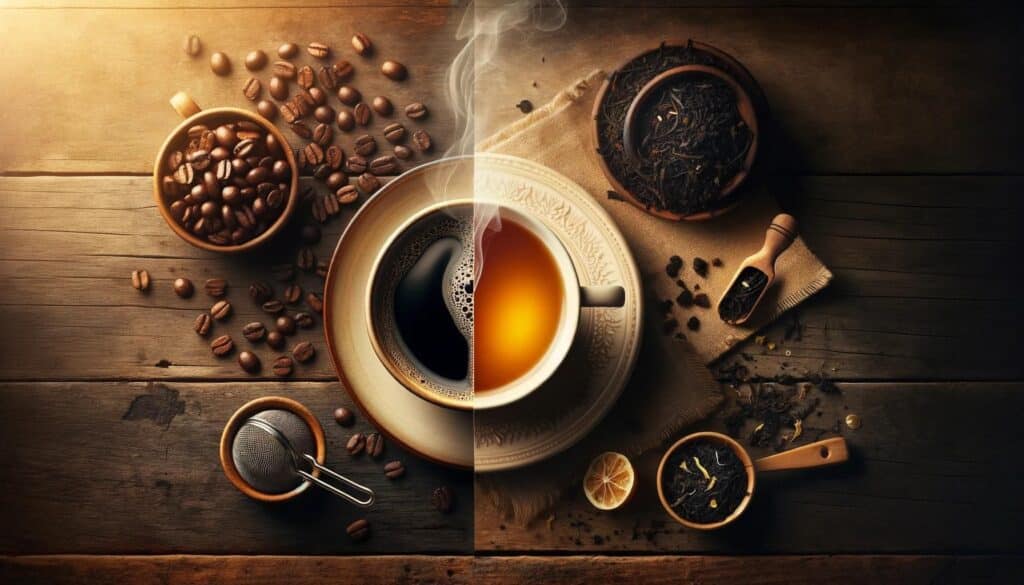
Caffeine is a natural stimulant most commonly found in coffee, tea, cacao plants, and several other natural sources. Its primary effect is on the central nervous system, where it acts to ward off drowsiness and restore alertness, making it a highly sought-after component of many daily routines. But caffeine’s influence extends beyond just fighting sleepiness; it also has a range of other effects on the body, both positive and potentially negative, depending on the amount consumed.
Definition and Effects of Caffeine on the Body
Caffeine works by blocking the action of a natural brain chemical that is associated with sleep. By doing so, it increases alertness and reduces the feeling of being tired. The effects of caffeine can be felt as soon as 15 minutes after consumption and may last for several hours, depending on the individual’s sensitivity to caffeine, the amount consumed, and their metabolism.
In moderate amounts, caffeine can have several beneficial effects, including:
- Improved concentration and focus
- Increased alertness
- Enhanced physical performance
- Stimulation of the central nervous system
However, consuming caffeine in large amounts can lead to negative side effects, such as:
- Insomnia
- Nervousness
- Restlessness
- Stomach irritation
- Increased heart rate and blood pressure
- Potential dependency, leading to withdrawal symptoms in its absence
How Caffeine is Measured in Beverages
Caffeine content in beverages is typically measured in milligrams (mg) per serving. The amount of caffeine can vary widely among different coffee and tea drinks, depending on the type of bean or leaf used, the brewing method, and the serving size. For example, an average 8-ounce (240-milliliter) cup of coffee can contain anywhere from 80 to 100 mg of caffeine, whereas the same serving size of tea might contain 15 to 60 mg, depending on the type of tea.
To accurately assess and compare the caffeine content in coffee and tea, it’s essential to consider:
- The specific type of coffee bean (Arabica vs. Robusta) or tea leaf (black, green, white, etc.)
- The brewing process, including water temperature, brewing time, and the amount of coffee grounds or tea leaves used
- The serving size, as larger servings naturally contain more caffeine
Understanding these factors can help consumers make informed decisions about their caffeine intake, tailoring their consumption to personal preferences and health considerations.
Coffee: A Deep Dive
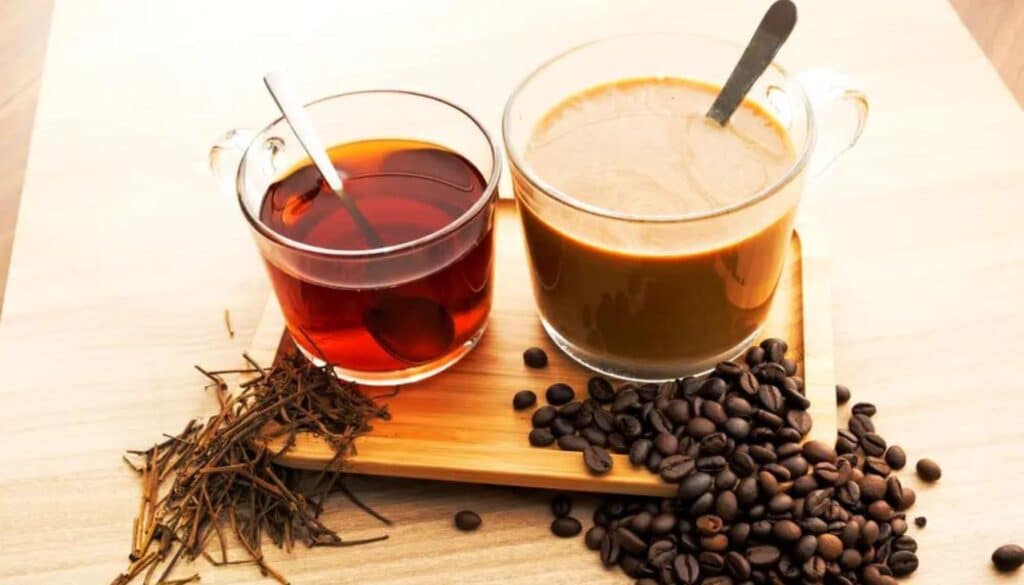
Coffee, a beloved beverage around the globe, owes its variety and distinct flavors to the type of bean used, the brewing method, and numerous other factors that influence its caffeine content and taste profile. Understanding these aspects can help coffee enthusiasts and casual drinkers alike navigate the world of coffee more effectively, especially when considering caffeine content.
Types of Coffee Beans and Their Caffeine Contents
The two most commonly consumed types of coffee beans are Arabica and Robusta, each with distinct characteristics, flavors, and caffeine levels:
- Arabica: Known for its smooth, complex flavor profiles, Arabica beans are favored for their lower acidity and reduced bitterness. They typically contain less caffeine than Robusta beans, making them a popular choice for those who are sensitive to caffeine or prefer a less intense coffee experience. Arabica beans are predominantly used in specialty and high-quality coffee products.
- Robusta: These beans are known for their strong, robust flavor and a higher bitterness level compared to Arabica. Robusta beans contain significantly more caffeine, which not only contributes to their bitter taste but also provides a natural defense against pests. This higher caffeine content makes Robusta beans a popular choice for those seeking a more potent energy boost or for use in blends to increase caffeine levels.
Arabica vs. Robusta: Caffeine Differences
The caffeine content in Arabica beans is typically about half that of Robusta beans. On average, Robusta beans contain around 2.2% to 2.7% caffeine by weight, compared to 1.2% to 1.5% caffeine in Arabica beans. This significant difference affects not only the taste and quality of the coffee but also its stimulating effects.
Common Brewing Methods and Their Impact on Caffeine Levels
The way coffee is brewed can also have a considerable impact on its final caffeine content:
- Espresso: Known for its concentrated form, espresso is made by forcing a small amount of hot water, or steam, through finely-ground coffee beans. Despite its stronger flavor, a single shot of espresso (about 1 ounce or 30 milliliters) generally contains about 63 mg of caffeine, which is less than the average content found in larger servings of other coffee types due to its small serving size.
- Drip Coffee: This common brewing method involves pouring hot water over ground coffee, which then passes through a filter. A standard 8-ounce (240-milliliter) cup of drip coffee can contain between 80 to 185 mg of caffeine, making it one of the higher caffeine content options compared to other methods.
- French Press: Also known as a press pot or plunger pot, this method involves steeping coarse coffee grounds in hot water for several minutes before pressing down the plunger to separate the grounds from the liquid. A cup of French press coffee contains roughly the same amount of caffeine as drip coffee, depending on the amount of coffee used and steeping time.
Average Caffeine Content in a Cup of Coffee
On average, the caffeine content in a standard 8-ounce (240-milliliter) cup of coffee can vary widely from about 80 to 185 mg, largely depending on the type of coffee bean, the brewing method, and the serving size. This variability underscores the importance of understanding both the type of coffee and how it’s prepared when considering caffeine intake.
Tea: A Closer Look
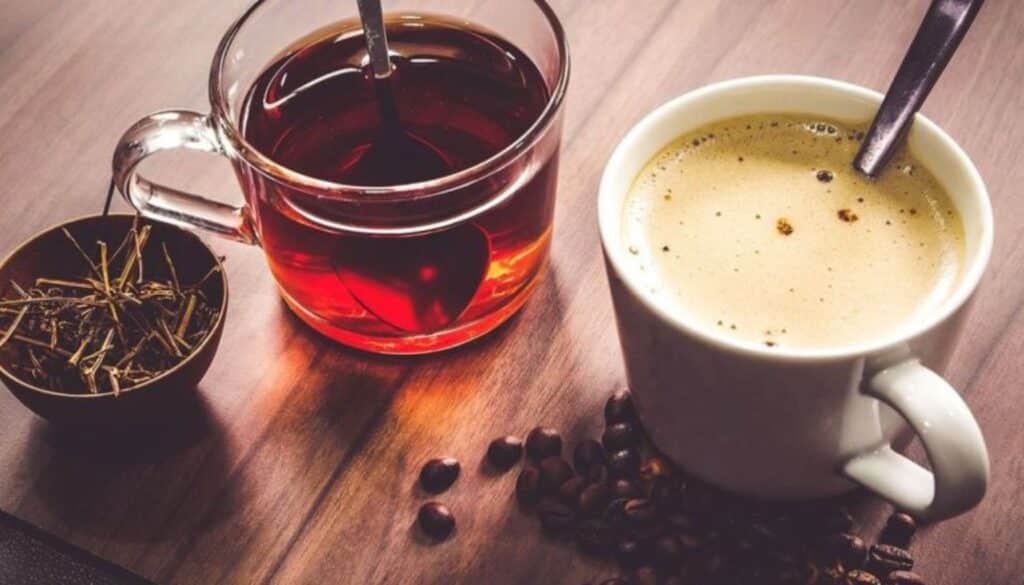
Tea, the most widely consumed drink in the world after water, offers a diverse palette of flavors, aromas, and caffeine levels, depending on the type, processing, and brewing method. Unlike coffee, which primarily varies by bean type and brewing technique, tea’s caffeine content is influenced by the specific variety of the tea leaf, its processing, and how it is prepared.
Types of Tea and Their Caffeine Contents
The main types of tea—green, black, white, and oolong—differ in their processing methods and thus in their caffeine content. Herbal teas, while popular, generally do not contain caffeine unless blended with a caffeinated tea or other caffeine-containing ingredients.
- Green Tea: Known for its minimal processing and resultant delicate flavors, green tea has a relatively low caffeine content, typically ranging from 20 to 45 mg per 8-ounce (240-milliliter) serving.
- Black Tea: Black tea undergoes a full oxidation process, which contributes to its darker color and richer flavor. It contains higher caffeine levels, usually between 40 to 70 mg per serving.
- White Tea: The least processed of all tea types, white tea has a light, subtle flavor and contains caffeine levels similar to green tea, generally around 15 to 30 mg per serving.
- Oolong Tea: Oolong tea is partially oxidized, placing its caffeine content between that of green and black teas, typically 30 to 50 mg per serving.
- Herbal Teas: These are not true teas but infusions of herbs, fruits, or plants, and are naturally caffeine-free, except when blended with caffeinated tea leaves.
Factors Affecting Caffeine Content in Tea
The caffeine content in tea is affected by several factors, including:
- Processing Methods: The degree of processing and oxidation a tea leaf undergoes significantly influences its caffeine content. More oxidized teas (like black teas) generally contain more caffeine than less oxidized teas (like green and white teas).
- Brewing Time: The longer tea steeps, the more caffeine is extracted into the water. A shorter brewing time will result in a less caffeinated cup.
- Water Temperature: Hotter water extracts caffeine more efficiently than cooler water, so the temperature at which the tea is brewed can also affect caffeine levels.
Average Caffeine Content in a Cup of Tea
On average, the caffeine content in tea can vary widely, not just by type but also by the specific leaf used and how the tea is prepared. Generally, an 8-ounce (240-milliliter) serving of tea can contain anywhere from 15 to 70 mg of caffeine, with herbal teas being an exception as they are typically caffeine-free. This range is considerably lower than that of coffee, making tea a more suitable option for those looking to lower their caffeine intake without eliminating it entirely.
Understanding these nuances allows tea drinkers to better navigate their choices, balancing their desire for caffeine with their preference for certain flavors and types of tea. Whether seeking a gentle lift from a cup of green tea or the stronger boost provided by black tea, consumers can adjust their selection based on the caffeine content that best suits their needs.
Direct Comparison: Coffee vs. Tea
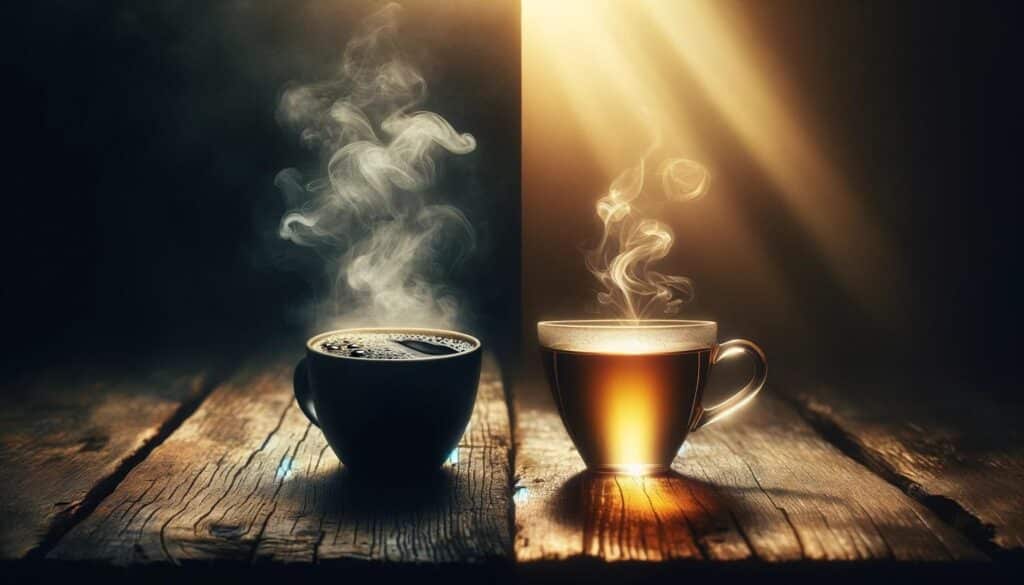
When it comes to choosing between coffee and tea, one of the most significant considerations for many people is the caffeine content. Understanding how these two beloved beverages compare on a cup-to-cup basis can help individuals make informed decisions that align with their health goals, caffeine sensitivity, and lifestyle needs.
Comparing Caffeine Content: A Cup-to-Cup Basis
On average, a standard 8-ounce (240-milliliter) cup of coffee contains significantly more caffeine than the same serving size of tea. Coffee’s caffeine content typically ranges from 80 to 185 mg per cup, depending on the type of coffee bean, the brewing method, and the strength of the brew. In contrast, tea generally offers a lower caffeine content, with amounts ranging from 15 to 70 mg per 8-ounce serving, depending on the type of tea (green, black, white, or oolong) and the brewing parameters.
This difference is primarily due to the nature of the coffee and tea plants and the methods used to prepare their respective beverages. Coffee is naturally higher in caffeine, and brewing processes are designed to extract a high level of this stimulant. Tea, while also containing caffeine, tends to release it more slowly, especially when considering that tea leaves are infused rather than fully extracted, and the caffeine content varies more significantly among the different types of tea.
The Role of Serving Sizes in Perceived Caffeine Intake
Serving sizes play a crucial role in the perceived caffeine intake from coffee and tea. While the standard comparison is often made using an 8-ounce serving size, actual serving sizes can vary greatly, especially in coffee shops and restaurants. For instance, a “grande” coffee from a cafe might be 16 ounces (about 480 milliliters) or more, potentially doubling the caffeine intake compared to the standard 8-ounce measurement. Similarly, tea drinkers might opt for larger mugs or multiple servings, which can also increase total caffeine consumption.
Moreover, the concentration of the brew—how much coffee or tea is used in relation to water—can significantly impact caffeine levels. A strong brew of coffee or tea will contain more caffeine than a weaker one, even if the serving size remains the same. Additionally, the habit of drinking multiple cups of tea throughout the day can lead to a cumulative caffeine intake that rivals or exceeds that of coffee drinkers, especially if stronger teas are chosen or brewed for longer periods.
While coffee generally contains more caffeine per cup than tea, the total daily caffeine intake from either beverage can vary widely based on serving sizes, brewing methods, and personal consumption habits. Tea offers a gentler caffeine curve, which might be preferable for those seeking a less intense stimulant effect or who are more sensitive to caffeine. On the other hand, coffee provides a more substantial caffeine kick in a single serving, appealing to those in need of a more immediate or stronger boost. Understanding these differences allows individuals to tailor their beverage choices to their caffeine sensitivity, lifestyle, and personal preferences, ensuring a satisfying and appropriate caffeine consumption experience.
Variables That Affect Caffeine Content
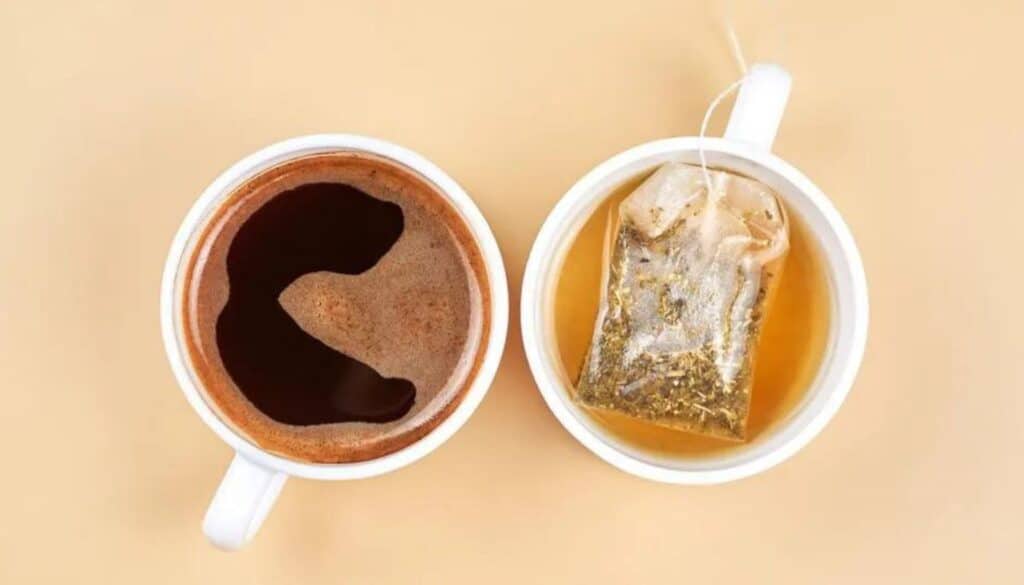
The caffeine content in coffee and tea is not fixed; it varies significantly based on several factors, including preparation methods, plant variety, growing conditions, and processing techniques. Understanding these variables can help individuals fine-tune their caffeine intake according to their preferences and sensitivities.
How Preparation Methods Influence Caffeine Levels
- Coffee Preparation: The method used to brew coffee greatly affects its caffeine content. Espresso, for instance, is highly concentrated and contains more caffeine per ounce than other methods, but because servings are small, the total caffeine intake may be less than a larger serving of drip coffee. The grind size, water temperature, and brewing time also play crucial roles. Finer grinds and hotter water can extract caffeine more efficiently, while longer brewing times can increase caffeine extraction.
- Tea Preparation: Similar variables affect tea’s caffeine content. The type of tea (loose leaf vs. bagged), water temperature, and steeping time all influence the amount of caffeine extracted. Green and white teas, for example, are typically brewed with cooler water and for shorter times than black or oolong teas, which can result in lower caffeine levels. Additionally, re-steeping tea leaves can produce a second cup with significantly less caffeine than the first.
The Impact of Plant Variety
- Coffee Varieties: The two main species of coffee plants, Arabica and Robusta, have differing caffeine contents, with Robusta beans containing almost twice as much caffeine as Arabica beans. The choice between these varieties can directly impact the caffeine level of the coffee produced.
- Tea Varieties: The caffeine content in tea can vary widely among different types, such as black, green, oolong, and white teas. This variance is due to differences in how each type of tea is processed and the part of the plant used. Younger tea leaves and buds tend to contain more caffeine than older leaves.
Growing Conditions and Processing
- Environmental Factors: The environment where the coffee or tea plants are grown can influence their caffeine content. Factors such as altitude, soil type, and climate can affect the plant’s metabolic processes, including caffeine production. Plants grown at higher altitudes, for example, often produce more caffeine as a protective mechanism against UV radiation.
- Processing Techniques: The way coffee beans and tea leaves are processed after harvesting can also affect their caffeine levels. For coffee, the method of processing the beans (wet vs. dry) does not significantly change the caffeine content. However, for tea, the level of oxidation (a process that turns the leaves darker) can increase caffeine levels. Black tea, which is fully oxidized, generally has more caffeine than less oxidized teas like green or white tea.
Understanding these variables allows consumers to make more informed decisions about their caffeine consumption, tailoring their choices to achieve the desired taste and effect. Whether it’s selecting a specific type of coffee bean, adjusting brewing techniques, or choosing a particular type of tea, small adjustments can significantly impact the overall caffeine experience.
Health Implications of Caffeine Consumption
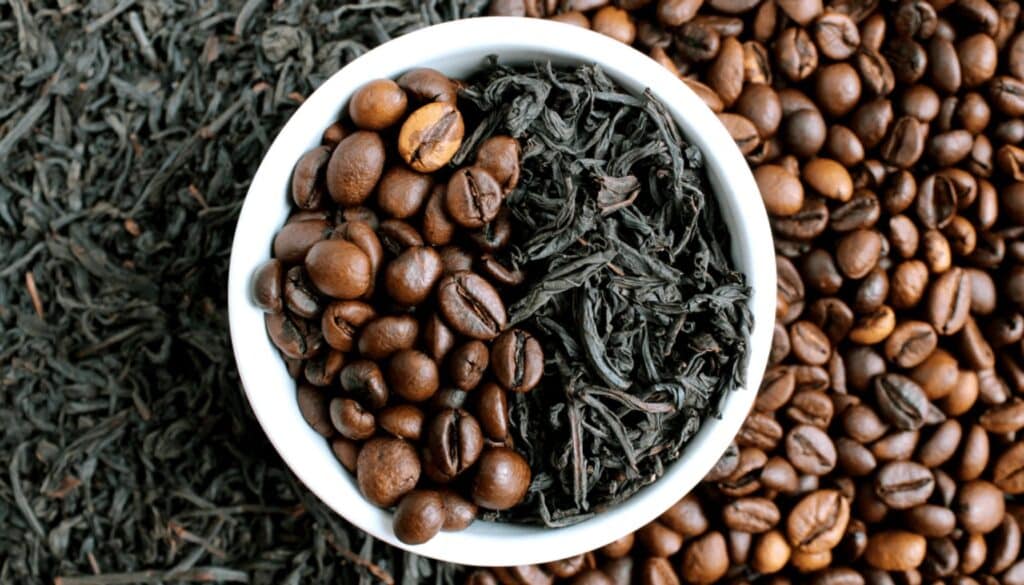
Caffeine, as one of the most widely consumed psychoactive substances in the world, offers both potential health benefits and drawbacks. Its effects can vary greatly among individuals, depending on factors like genetics, tolerance, and existing health conditions. Understanding these can help guide more informed choices regarding caffeine consumption.
Benefits of Caffeine
Caffeine’s stimulating effects on the central nervous system can lead to several perceived health benefits, including:
- Enhanced Mental Alertness and Cognitive Function: Caffeine can help improve concentration, focus, and mental alertness. It may also enhance cognitive function and memory in some individuals.
- Increased Physical Performance: By stimulating the release of adrenaline, caffeine can enhance physical performance, making it a popular pre-workout supplement.
- Metabolic Boost: Caffeine may increase metabolism and fat burning, aiding in weight management efforts for some people.
- Reduced Risk of Certain Diseases: Studies have suggested that regular caffeine consumption is associated with a lower risk of diseases such as Parkinson’s, Alzheimer’s, and certain types of cancer.
Drawbacks of Caffeine
While moderate caffeine intake is generally considered safe for most people, excessive consumption can lead to negative health effects, including:
- Sleep Disruptions: Consuming caffeine late in the day can interfere with sleep patterns, leading to insomnia and decreased sleep quality.
- Increased Heart Rate and Blood Pressure: In some individuals, particularly those sensitive to caffeine or with specific health conditions, caffeine can cause an increase in heart rate and blood pressure.
- Anxiety and Nervousness: High doses of caffeine can exacerbate anxiety, cause nervousness, and lead to jitteriness and discomfort.
- Dependency and Withdrawal: Regular caffeine use can lead to dependence, and reducing or stopping intake abruptly may result in withdrawal symptoms such as headaches, irritability, and fatigue.
Recommended Caffeine Intake Limits
Health authorities typically recommend that adults limit their caffeine intake to no more than 400 mg per day, which equates to about 4-5 cups of coffee, though individual sensitivity varies. Pregnant and breastfeeding women are advised to limit their intake to a maximum of 200 mg per day due to potential effects on the fetus or infant.
Considering Health Conditions in Choosing Between Coffee and Tea
When choosing between coffee and tea, individuals with certain health conditions should consider their caffeine sensitivity and the potential health impacts:
- For those with anxiety disorders, the lower caffeine content in tea might be a better option.
- Individuals with acid reflux or GERD may find that tea is less aggravating than coffee for their condition.
- People with high blood pressure should monitor their caffeine intake carefully; switching to lower-caffeine options like tea might be beneficial.
- For those looking to maximize health benefits while minimizing risks, green tea offers a good balance with its combination of lower caffeine content and high levels of antioxidants.
In summary, while caffeine has both benefits and drawbacks, moderate consumption is key to maximizing its positive aspects while minimizing potential negative effects. Individuals should consider their health conditions, caffeine sensitivity, and personal preferences when choosing between coffee and tea, aiming for a balance that supports their overall health and well-being.
Conclusion
The exploration of caffeine content in coffee versus tea reveals several key findings that can guide individuals in making informed beverage choices based on their personal preferences, health considerations, and caffeine sensitivity.
Summary of Key Findings
- Caffeine Content: Coffee generally contains more caffeine per cup compared to tea. While the caffeine content in coffee ranges from 80 to 185 mg per 8-ounce serving, tea offers a broader spectrum, from 15 to 70 mg, depending on the type (green, black, white, or oolong) and preparation method.
- Preparation and Variety: The caffeine levels in both coffee and tea can vary widely based on factors such as the type of coffee bean (Arabica vs. Robusta) or tea leaf, brewing methods, and serving sizes. Espresso, for instance, is more concentrated but served in smaller quantities, whereas the longer steeping times and higher water temperatures can increase caffeine extraction in tea.
- Health Implications: Moderate caffeine consumption can offer health benefits, including enhanced cognitive function, physical performance, and a reduced risk of certain diseases. However, excessive intake may lead to negative side effects like sleep disruption, increased anxiety, and potential cardiovascular effects.
Personal Preference vs. Health Considerations
Choosing between coffee and tea often boils down to a balance between personal taste preferences and health considerations. While some individuals may prefer the robust flavor and higher caffeine kick of coffee, others might favor tea for its variety, milder effects, and potential health benefits associated with its antioxidants.
Final Thoughts on Making an Informed Choice
Making an informed choice between coffee and tea involves considering not just the caffeine content but also understanding how individual factors such as caffeine sensitivity, health conditions, and lifestyle needs affect this decision. It’s important to listen to one’s body and consider how different levels of caffeine impact personal health and daily functioning.
Ultimately, whether choosing coffee, tea, or a combination of both, the key is to enjoy these beverages in moderation, taking into account their potential effects on health and well-being. By doing so, individuals can harness the benefits of caffeine while minimizing the risks, aligning their beverage choices with their overall health goals and personal preferences.
References and Further Reading
- Healthline. (n.d.). Caffeine in tea vs. coffee: How do they compare? Retrieved from https://www.healthline.com/nutrition/caffeine-in-tea-vs-coffee
- The Washington Post. (2022). Coffee vs. tea: Which is better for you? Retrieved from https://www.washingtonpost.com/wellness/interactive/2022/coffee-vs-tea-nutrition-health/
- Twinings. (n.d.). Tea vs. Coffee. Retrieved from https://twinings.co.uk/blogs/news/tea-vs-coffee
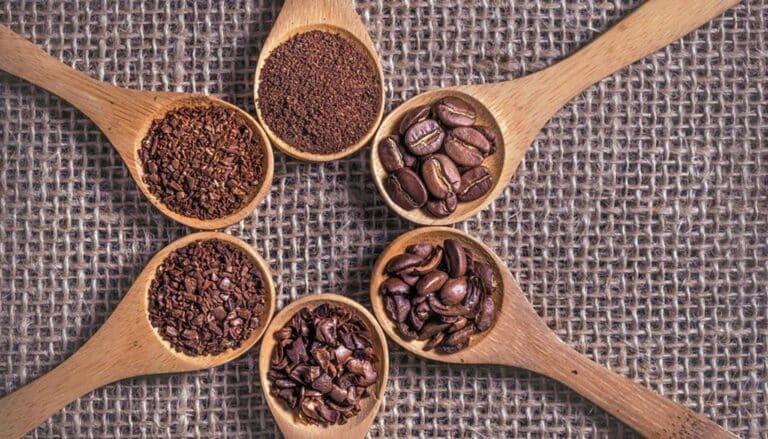


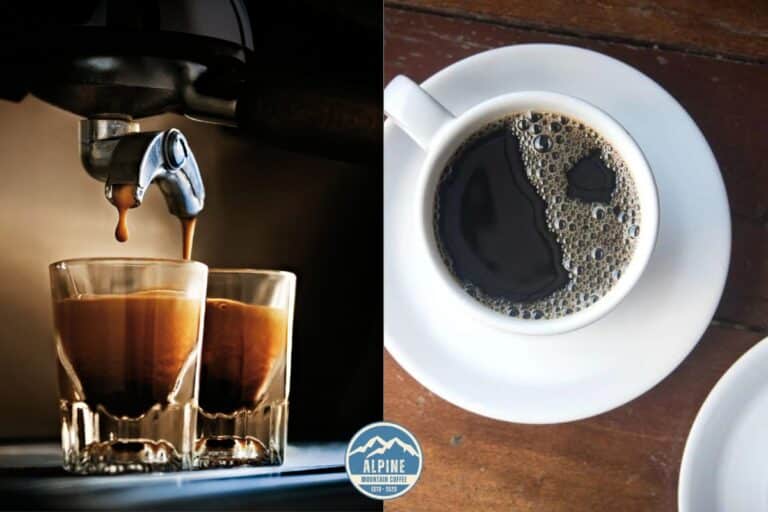



3 thoughts on “Does Coffee Have More Caffeine Than Tea?”
Good day! Woulod you mnd if I share yur blog with mmy myspace group?
There’s a lot of folks that I think would really enjoy your content.
Please let me know. Thanks https://lvivforum.Pp.ua/
No I do not mind. Share anything you would like from this website.
– Thanks
Lots of useful info! Thank you for sharing!!